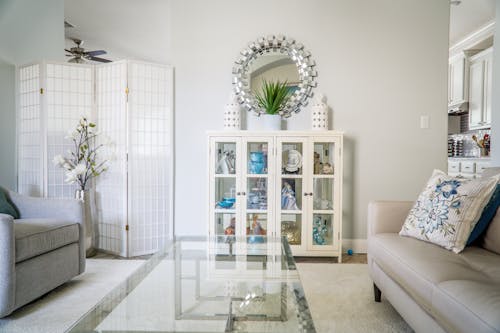“
Create Your Serene Space: A Guide to the Minimalist Living Room
Tired of clutter and visual noise? Imagine a space in your home that feels calm, peaceful, and effortlessly stylish. This is the promise of a Minimalist living room. Far from being stark or empty, a minimalist design focuses on intentionality, functionality, and creating an environment that truly serves you.
Embracing the Minimalist living room concept is about more than just removing items; it’s a design philosophy that prioritizes quality over quantity, space over stuff, and tranquility over clutter. Let’s explore how to achieve this sought-after aesthetic in your own home.
What Defines a Minimalist Living Room?
At its core, a Minimalist living room adheres to the principle of “less is more.” Key characteristics include:
- Decluttering: Removing all non-essential items.
- Clean Lines: Furniture and decor typically feature simple, uncluttered silhouettes.
- Neutral Color Palette: Whites, grays, beiges, and soft earth tones form the base, with minimal pops of color.
- Intentional Decor: Every decorative piece has a purpose or holds significant meaning.
- Focus on Functionality: Furniture serves its primary purpose efficiently and often incorporates hidden storage.
- Open Space: Allowing room to breathe and move freely is crucial.
Key Elements of a Minimalist Living Room
Transforming your space into a Minimalist living room involves focusing on specific elements:
1. Ruthless Decluttering
This is the foundational step. Go through everything. Ask yourself if each item is necessary, functional, or truly brings you joy. Be brave and remove anything that doesn’t meet these criteria. Find smart, concealed storage solutions for items you need but don’t want on display.
2. The Power of Neutrals
A calm, neutral color scheme is essential for a Minimalist living room. These colors create a serene backdrop and make the space feel larger and brighter. You can add depth and interest through textures – think a chunky knit throw, a woven rug, or textured wall art.
3. Functional, Quality Furniture
Invest in well-made pieces with simple designs. Choose comfortable seating that fits the scale of the room without overwhelming it. Multi-functional furniture, like an ottoman with storage or a sofa bed, can be excellent choices in a Minimalist living room.
4. Intentional Decor and Accessories
Avoid shelves filled with trinkets. Select a few carefully chosen decorative items. This could be a piece of art you love, a beautiful plant, a sculptural vase, or a stack of curated books. These items should add aesthetic value without causing visual clutter.
5. Maximizing Light and Space
Keep windows unobstructed to allow natural light to flood the room. Simple window treatments like sheer curtains or blinds work well. Strategic placement of furniture creates pathways and emphasizes open floor space, a hallmark of the Minimalist living room.
Benefits of a Minimalist Living Room
Choosing a minimalist approach offers numerous advantages:
- Increased Calm and Reduced Stress: Less visual clutter leads to a more relaxed mind.
- Easier Cleaning and Maintenance: Fewer items mean less to dust and tidy.
- Improved Focus: A simple environment reduces distractions.
- Timeless Appeal: Minimalist design tends to transcend trends.
- Potential Cost Savings: You buy fewer, often higher-quality items.
Ready to Create Your Minimalist Living Room?
Start small. Begin by tackling one area, like a bookshelf or coffee table. Then, move on to larger sections. Focus on the feeling you want to create – peaceful, open, functional. By making conscious choices about what you bring into and keep in your space, you can cultivate a truly serene and stylish Minimalist living room.
Embrace the journey to a simpler, more beautiful home by designing your ideal Minimalist living room today.
“




